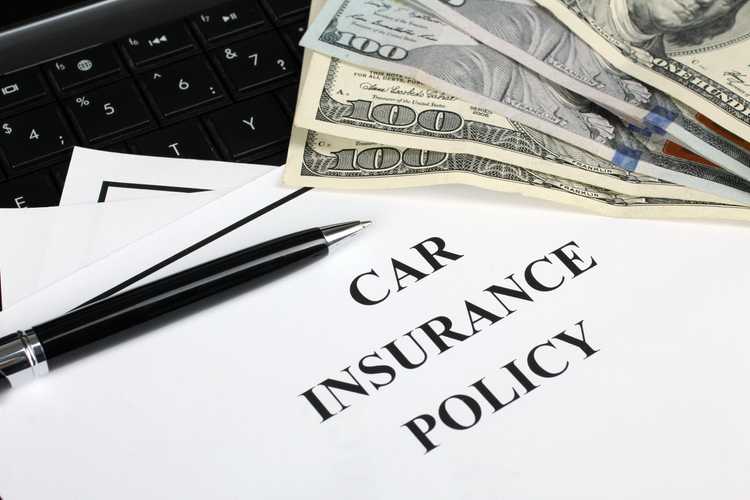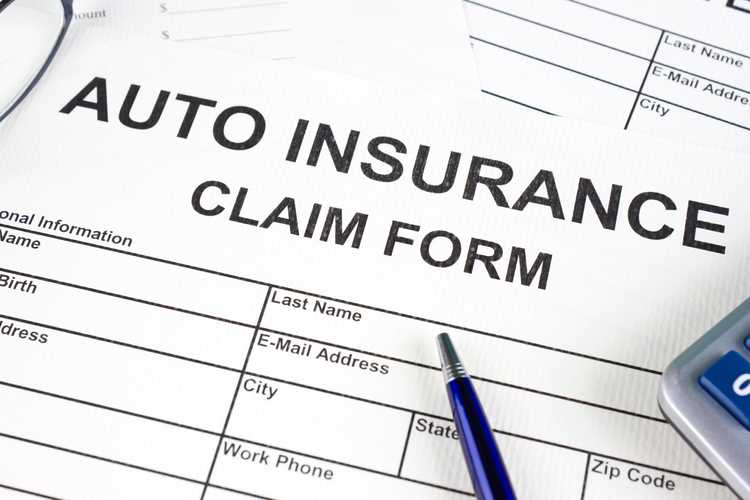There’s no doubt about it, car insurance can be a major expense. According to the American Automobile Association’s annual fact sheet, “Your Driving Costs,” the average premium for a full coverage policy in 2020 was more than $1,200. That’s just a national average. An individual driver’s premium can increase dramatically if they’ve been in an accident or had a DUI, or live in an area where the frequency of accidents or theft are higher than normal.
The good news? No matter what your situation, there are likely some things you can do to save money on your car insurance premium. There’s also one thing you should never do.
Looking to save? Try some of these tips.
Shop around between companies
Most car insurance companies calculate your premium based on various factors: your driving history; your vehicle’s year make and model; how many miles you drive, etc. But each company has its own “secret recipe” for how it combines these factors. Each must also account for how much it has to pay out overall in claims. If an insurance company is paying out a lot of money to settle claims, it may have to increase the amount of money it charges in premiums for all of its customers.
For these reasons, premiums can vary dramatically between car insurance companies. One survey of the nation’s largest car insurers revealed a nearly $1,200 difference between the most and least inexpensive insurance company for a full coverage policy.
The bottom line: Shop around for the best premium. You might be surprised what you find.
Bundle multiple policies with one company
Many insurance companies offer a generous discount if you “bundle” your policies. This simply means you have all of your insurance policies — for example, homeowners and car, or renters and car — with the one company.
The reason why is simple. Insurers have found that people who bundle tend to be longer-lasting customers. So they want to encourage you with a financial incentive in the form of a discount.
Insure multiple cars on one policy
If you have two or more cars in your household, try insuring them on the same policy rather than on separate policies. Many car insurance companies offer a discount for doing so. You’ll have the added benefit of streamlining your insurance a bit.
Pay your premium in full
How you pay your policy can actually make a difference in what you pay. Many insurance companies offer a discount for paying your premium in full — in a lump sum — at the start of a 12-month policy term. Paying in full also means you’ll avoid the additional installment fee that comes with making monthly payments.
Pay by automatic withdrawal
If you don’t think you can afford paying the premium in full, then consider using automatic withdrawal for your installment payments. Some insurance companies offer a discount for this (though it may not be as much of a discount as for paying in full).
When you sign up for automatic withdrawal, you give the insurance company your bank’s routing number and your checking account number, and sign an authorization. The insurance company then withdraws your payment automatically, on the same day each month. Some companies even allow you to choose the day of the payment, so you can coordinate it with your payday.
An added benefit of automatic withdrawal is that you’ll never need to worry about missing a payment. This, in turn, can help you avoid missed payment fees and the possible suspension of your policy.
Sign up for “paperless” policy and billing
Some insurers offer a discount for choosing their paperless policy and billing options. So, rather than receive paperwork in the mail, you access your policy online at the company’s website or app, and receive notifications by email.
These insurance companies want to encourage paperless because they save on costs related to producing and mailing hard copies of all that paperwork. And besides saving a little more money, you have less clutter to deal with!
Take action well before you really need your policy
Some large insurers offer a discount for getting a quote at least a week or two before you actually need coverage. A variation of this is a discount given for signing up for the policy at least a few days before its effective date (when coverage actually starts).
The bottom line here is to take action early — don’t wait until the last minute to shop for insurance.
Ask about other policy discounts
Most leading car insurance companies offer a wide array of discounts. Examples include those for:
- Having anti-theft devices on your vehicle
- Taking a defensive driving course
- Having a safe driving record
- Being accident free
- For younger drivers, having good grades
- Having a driver on the policy who’s a student away at college
- Owning a home
- Being a long-tenured customer (often for multiple years)
- Being an active or retired member of the US military, or a US federal government employee
- At least one major insurer offers discounts to alumni of various universities
Many insurance companies will allow you to stack discounts — so the more discounts you qualify for, the more you can save. The catch is that you might have to ask the insurance company to have them applied to your policy. Call your insurance company or check their website to see what’s offered.
Try a usage based insurance program
A growing number of car insurance companies offer usage based insurance (UBI). Examples include Allstate’s Drivewise and Progressive’s Snapshot program. These companies offer a discount for your participation in the program, along with the promise of additional savings if you have good driving habits.
With UBI, you agree to have the insurance company access hard data about how you drive. Some companies get that data from your phone’s GPS, transmitted wirelessly with an app you download. Some insurance companies instead provide you with a small transmitter that you plug into a data port underneath your dashboard. Still others gather data from on-board telematics systems such as General Motors’ OnStar.
Regardless of how the data is collected, the insurance company uses it to get a more accurate picture of how you drive — and make a more accurate prediction of your likelihood of being in an accident and filing a claim.
These programs may be to your advantage if you drive less than average, and drive safely. Of course, you’ll need to be comfortable with having your data gathered and analyzed by your insurance company.
Try pay-per-mile insurance
A relatively new trend is known as pay-per-mile car insurance. With these programs, you pay a daily, base rate; plus a daily, per-mile rate based on how much you drive. Your daily mileage is collected through a device that you plug in to your car’s data port, then transmitted wirelessly to the company.
If you drive an exceptionally low number of miles per month — perhaps you live in a large city and rely mostly on public transit, or you work from home and don’t have a commute — pay per mile might make more sense than a standard car insurance policy.
Raise your deductibles
A tried and true method of saving money on car insurance is to raise the deductibles on your comprehensive and collision coverage.
The deductible is a dollar amount. It represents your share of the cost to repair or replace your car should you file a comprehensive or collision claim. For example: Say your deductible is $500. You damage your car, file a claim, and the repair costs $3,000. Your insurance company will pay $2,500 for that repair, leaving you responsible for $500.
You choose your deductible when you buy your policy (common options are $250, $500, and $1,000), and can adjust it at any time. By raising your deductible, you assume a greater share of potential repair costs. For doing that, your insurance company will lower your premium. Just remember that you’ll owe more money out-of-pocket if you file a claim.
Consider dropping your comprehensive and collision coverage if your vehicle is older
If you have an older vehicle whose value has depreciated significantly, it may make sense to drop your optional comprehensive and collision coverages altogether.
If you’re driving a car valued at, say, $2000, your insurance company would likely declare the car a total loss if it were severely damaged in an accident. So your maximum payout if you file a claim would be no more than $2,000 — likely not worth the cost of the coverage.
Note: When your insurance company determines the value of your car, it’s looking at what’s called “actual cash value.” This is not the market value of the car, or even the value you see in the NADA Guide or Kelley Blue Book. It’s more likely the car’s wholesale price at auction, which may be very low. It’s important that you be realistic when assessing your vehicle’s value when considering whether to choose comprehensive and collision.
Consider dropping other coverages you may not need
Your policy may have coverages that made sense at one time, but that you no longer need.
One example is loan/lease payoff coverage (sometimes called “gap” coverage). Loan/lease payoff is really only relevant if you have a loan or lease. With this coverage, in the event the car is declared a total loss due to an accident or theft, your insurance company will pay you what you actually owe for the car, not what the car is actually worth (without loan/lease coverage, your insurer will only pay you what the car is worth, which could be several thousand dollars less than what you owe).
Once you pay off your loan or lease, there’s really no sense in continuing to have this coverage. So remove it from your policy and save a few dollars in premium.
Improve your use of credit
Insurance companies figured out a long time ago that there’s a correlation between a person’s use of credit and the likelihood they’ll file a claim. People who use credit responsibly thus tend to have lower car insurance premiums.
Experts recommend three steps to improve your credit for better car insurance premium:
- Make sure you’re not late on any loan or credit card payments
- Keep your credit card balances below your credit limit
- Open new credit accounts (loans and credit cards) only when necessary
Of course, it’s always a good idea to check your credit report periodically. Follow up on any errors or inconsistencies with the credit reporting agency and your bank or credit card company.
Talk to an insurance agent
Many people prefer to buy insurance online, directly from the insurance company. It’s for good reason: Insurance companies have invested a lot of money into making their sites easy to use. Websites are also available 24/7, so you can get a policy any time of the day, any day of the week.
But if you’re looking for ways to save, you owe it to yourself to talk to an insurance agent. Agents are licensed by the state, and trained to help people get the insurance they need at a price they can afford. They know the ins and outs of the companies they represent, including the available discounts and coverage options. Independent insurance agents — those without a direct relationship to a specific insurance company — can shop around among several insurers to help you get the best combination of coverage and price. They can also advise you on what coverages you can consider adjusting or dropping depending on your specific insurance needs.
The bottom line is that insurance agents are a valuable resource for anyone looking to save on insurance.
The one thing you should never do to save money on insurance
It may be tempting, but don’t cancel your insurance policy if you plan to drive. It’s simply not worth the risk.
First, you’d leave yourself even more financially vulnerable. Your liability in an accident can reach into the tens or hundreds of thousands of dollars. Being uninsured, a court could come after any and all savings or property you own to help compensate other parties for their injuries and property damage.
Second, you’d likely face serious legal consequences. Laws vary by state, but typically include steep fines, license suspension, vehicle impoundment, and potential jail time for repeat offenders. Most states would also require you to have an SR-22 to get your license back; this is a filing that your insurance company sends to the state to prove that you are, indeed, insured. You can expect that to drive up the cost of your premium.
Third, you’d likely pay more for car insurance when you do get a new policy, especially if you have a lapse of more than 30 days.
Take control of what you pay
Insurance can be costly, but it’s a necessity of life for most of us. Fortunately, there are some things you can do to take control of what you pay in premium. Try some of these tips, and see if you can save money on your car insurance.



